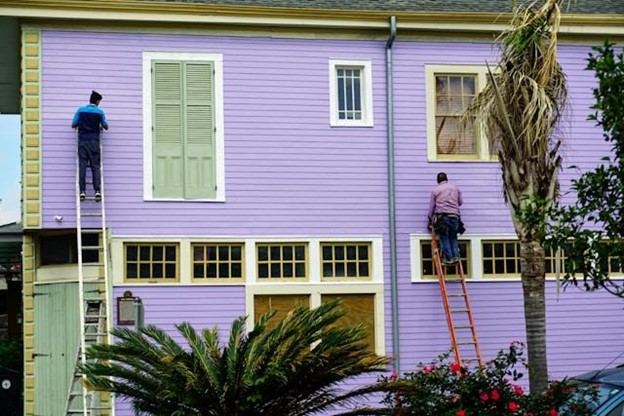Consider siding as your home’s protective shield, offering primary protection against external elements like weather, moisture, and wildlife threats. This is essential for maintaining your residence’s overall health and durability.
In cases of damage, immediate repair or replacement becomes essential to ensure the siding remains functional, preventing extensive and costly harm to your home’s internal structure. Yet, identifying indications of deteriorating cladding may not always be evident, particularly if you lack familiarity with the warning signs to observe. Here are six critical signs indicating your house siding needs repair and replacement.
Cracked Siding
If you have observed any gaps, blemishes, or fractures in your siding, these issues not only pose immediate concerns but also typically indicate potential underlying damage concealed beneath the siding panels. Often linked to water infiltration, such issues can lead to complications like mold growth as water seeps through the cracks and harms the substrate.
If your siding exhibits peeling as its sole visual cue, it may not necessitate immediate replacement. Depending on the extent of the peeling, repairs might suffice to address the issue. Upon noticing any visual damages, contact siding contractors for a professional assessment. This inspection can unveil any significant concerns with your siding and provide clear guidance on the most appropriate steps to rectify the situation.
Peeling Unattractive Paint
Poor exterior siding on your home can have repercussions indoors. Have you observed loose wallpaper or peeling paint inside your home? These interior signs could be a signal that your siding requires replacement.
Despite multiple layers, including insulation and drywall, between your siding and external walls, degradation can lead to the infiltration of water and heat from outside, affecting the interior. Moisture penetration through compromised siding into the walls can pose significant risks of damage to your property. If no internal causes are evident for the issues with paint or wallpaper, it might be necessary to investigate the exterior of your home.
Warping and Buckling
If the siding panels on your house begin to bend or move away from the wall, it indicates issues of warping or buckling. Certain house siding materials are more predisposed to encountering these problems than others. For instance, vinyl siding is particularly susceptible to warping under high temperatures.
Porous choices can warp due to excessive moisture. In certain scenarios, warped wood siding may signal the presence of rot. A simple way to verify this is by inserting a screwdriver under the warped panel. If the siding feels soft beneath, it confirms a rot concern. Additionally, try tapping the panel’s surface. If it produces hollow sounds or cracks, you have detected dry rot, which can be extremely challenging to observe visually.
Poor Aesthetic
Your home’s siding may not align with your desired aesthetic. Whether due to wear, fading, or outdated styles, upgrading your siding can enhance curb appeal for personal enjoyment or attract buyers, proving to be a valuable investment.
Beyond the surface, unappealing siding can signal underlying issues. Cracked vinyl siding could allow moisture infiltration, while holes in wood siding might indicate pest infestations. Upon detecting these issues, timely siding replacement can avert further damage, preserving your home’s appearance and structural integrity long-term.
Signs of Aging
Regardless of the care you provide for your house siding, aging is inevitable. While specific indicators like fading have been highlighted, aging presents itself through various other means. Vinyl siding may develop irregular patches where the texture becomes undulating and distorted.
Wooden siding may exhibit peeling paint, and in severe instances, show signs of both cracking and decay. When faced with these issues, prioritize replacing your house siding, as its ability to effectively shield your home from environmental conditions may be compromised.
You Are Prepared to Relocate
In the real estate industry, initial perceptions matter greatly as opportunities for a redo are scarce. When selling your home, installing new siding can substantially boost its value. A property featuring crisp, appealing, and contemporary siding is more likely to catch the eye of prospective buyers. Conversely, worn-out or outmoded siding may deter potential purchasers.
The extent to which your home’s value appreciates depends on the caliber, design, and materials of the siding chosen. Relying on a seasoned home installation specialist can assist you in selecting the optimal siding solution that aligns with your unique financial plan and preferences, providing payment and financing choices tailored to your situation.
Endnote
Siding primarily serves to block water and moisture intrusion into the house interior. Yet, similar to all products, siding undergoes natural degradation with time. If you encounter any of the listed issues, it is recommended to address them promptly through repair or replacement to avoid extensive water damage.
Photo by Ricky Singh on Unsplash

Recent Comments